If you are a history lover, then a vacation to Greece is pure perfection. Known as the birthplace of Western civilization, Greece’s lush and tumultuous history spans several millennia.
Athens, Greece’s capital, is the oldest European capital, with a whopping 5,000 history of continuous habitation sprawled out for you to explore and see. But Athens isn’t even the oldest city in Greece. That title goes to Argos, in the Peloponnese, with a history of around 7,000 years of continuous habitation.
There are over 300 archaeological and significant historical sites that you can visit in Greece right now!
Which of them is the best, the must-see for history lovers? We’ll look at the top 15 of them today!
Disclaimer: This post contains affiliate links. This means that should you click on certain links, and then subsequently purchase a product, I will receive a small commission.
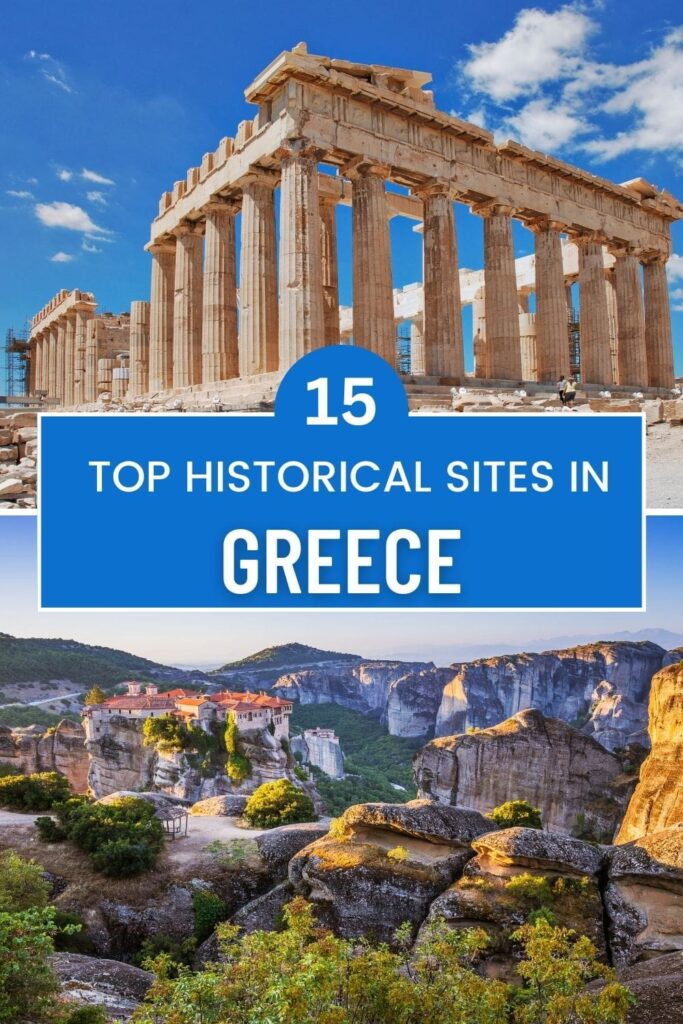
Famous Historical Places to Visit in Greece
1. The Acropolis of Athens
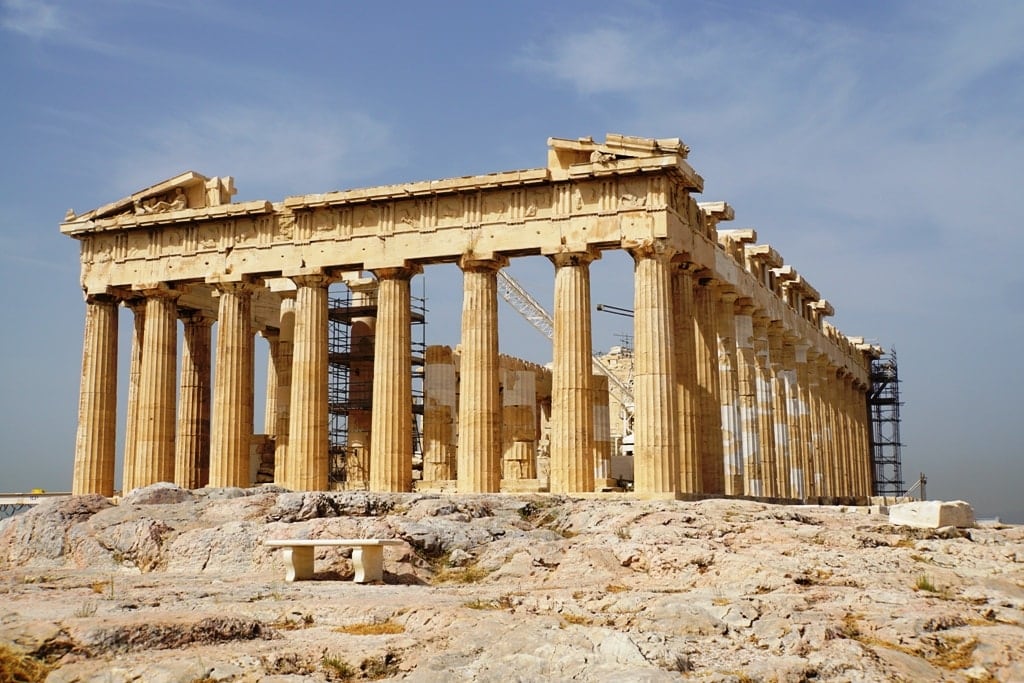
The Acropolis of Athens is so iconic that it’s likely what you think of when thinking of Athens or Greece in the context of ancient heritage. It’s been around since at least the Bronze Age, and its history is vast and intertwined with the passage of time right down to modernity.
The Acropolis includes many structures, the most famous of them being the Parthenon, a magnificent temple dedicated to Athena, the patron goddess of Athens. While in its beginnings the Acropolis was a normal citadel with inhabitants within its walls, it was dedicated solely to the gods and its complex only included temples and ceremonial buildings during the time of Pericles.
Going into the Acropolis you will see not only the Parthenon but other iconic buildings such as the Erectheion and the temple of Athena Nike.
Recommended tour: Acropolis Small-Group Guided Tour with Entry Ticket
2. Delphi
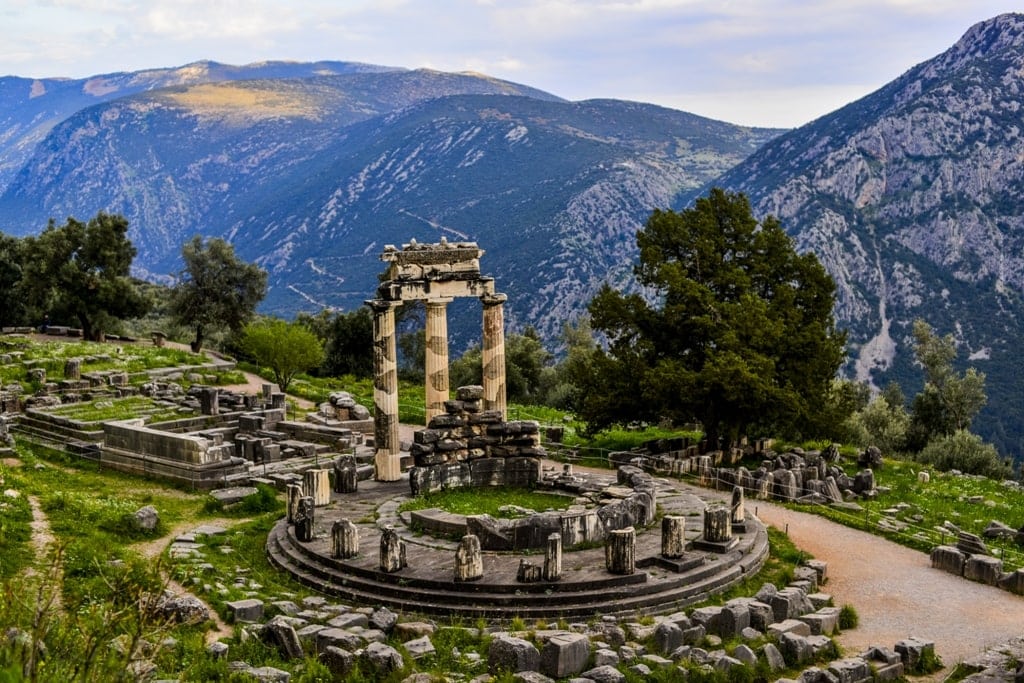
Sitting at the verdant slopes of Mt. Parnassus, you will find the ancient site of the Oracle of Delphi and the adjacent temple and city complex.
The ancient Greeks believed that Delphi was the navel of the world, which means that it was the center of the world or universe. Delphi was dedicated to the god Apollo and his priestess there, a Sybil called Pythia, who would make prophecies for whoever visited seeking to learn of the future.
The renown of the Oracle of Delphi was far and wide and lasted for around a thousand years. Nowadays, you can visit the archaeological site and the archaeological museum there to learn all about the procedure the Pythia followed to give the prophecies, the Oracle’s sheer power upon the ancient world, and much more.
Recommended tour: Delphi Guided Trip from Athens.
3. Meteora
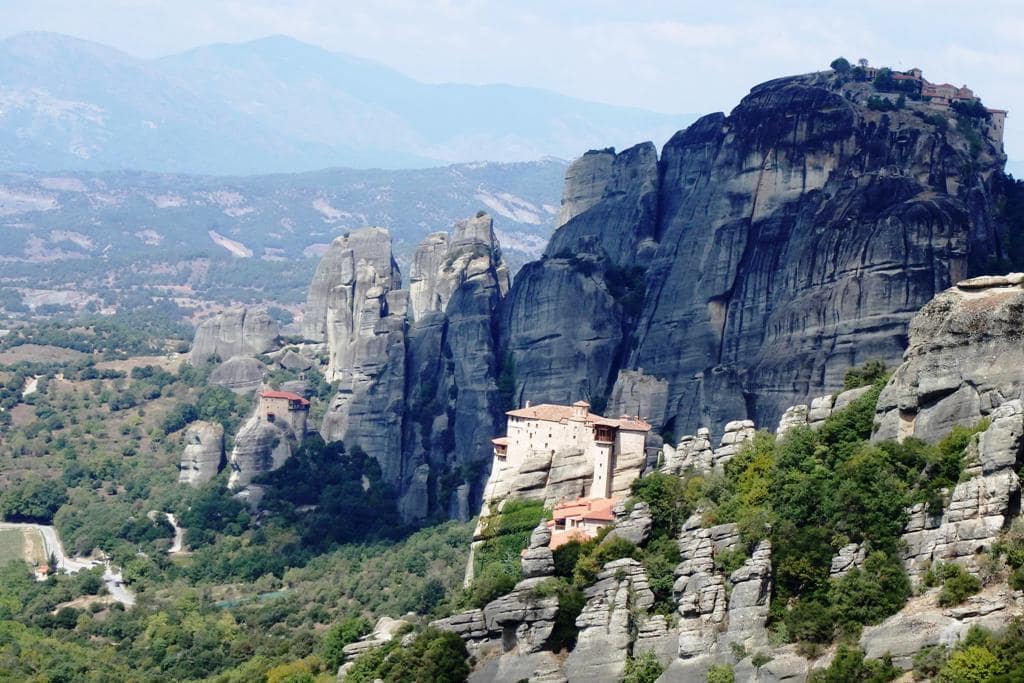
At the northwest side of the Plain of Thessaly, near the town of Kalabaka, you will come upon Meteora, the biggest archaeological site of Greece and one of the most imposing.
With its iconic, towering rock formations and the monasteries perched precariously on their tops since early Christian times, a long history of man’s effort to communicate with the divine unfolds.
Some monasteries date as far back as the 9th or 10th century AD and feel like arks preserving culture and history of times lost in the sands of time. Culture and history you can immerse yourself when you visit the six active monasteries of the area.
The sheer amount of early Christian and Byzantine artwork you will find within their walls, perfectly preserved for a thousand years and more, is only rivaled by the breathtaking beauty and spiritual experience you will have to visit.
Recommended tour: Full-Day Meteora Trip by Train from Athens.
4. Mycenae
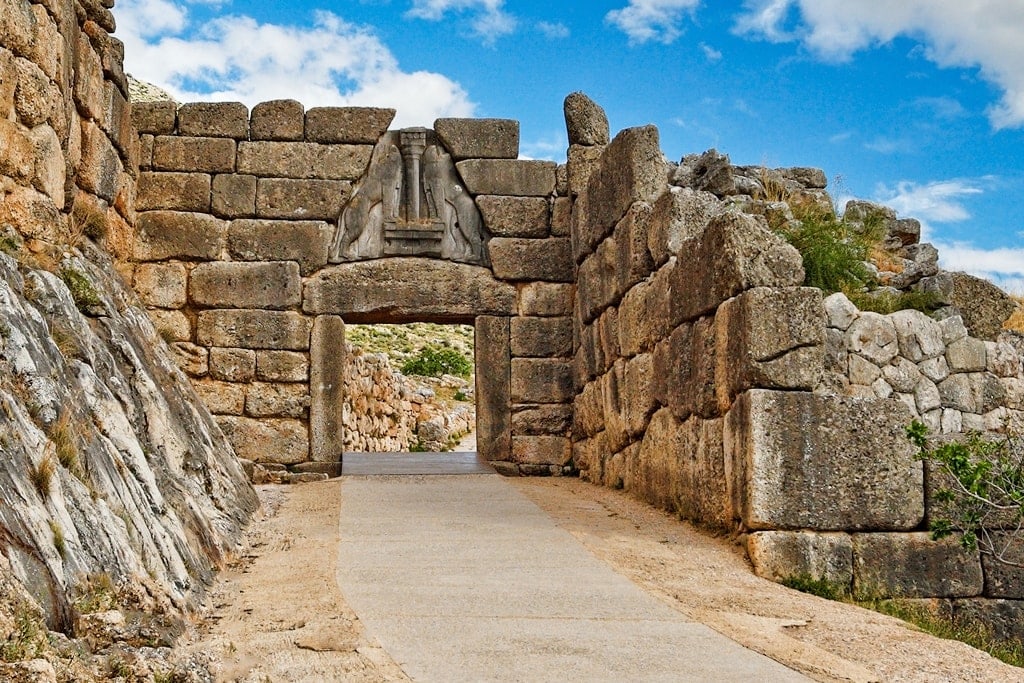
The ancient city-state in the region of Argolis, in the Peloponnese, was of such tremendous historical significance that it gave its name to the historical era: the Mycenean Era, the era of the Trojan War.
During this time, 1600-1100 BC, Mycenean culture took over the previous Minoan one and spread throughout mainland Greece, the Aegean islands, and even Asia Minor.
Mycenae, the city-state of the famed Agamemnon from Homer’s Iliad, is an iconic archaeological site now. The city is fortified with impressive, huge walls called Cyclopean walls (or Cyclopean masonry). They were called that even in ancient times when the people believed that gigantic Cyclopes had built the walls at the behest of the gods.
There are also the famed tholos tombs to visit, including the Tomb of Clytemnestra, as well as the Palace of Mycenae.
Recommended tour: Mycenae and Epidaurus: Full-Day Tour from Athens.
5. Epidaurus
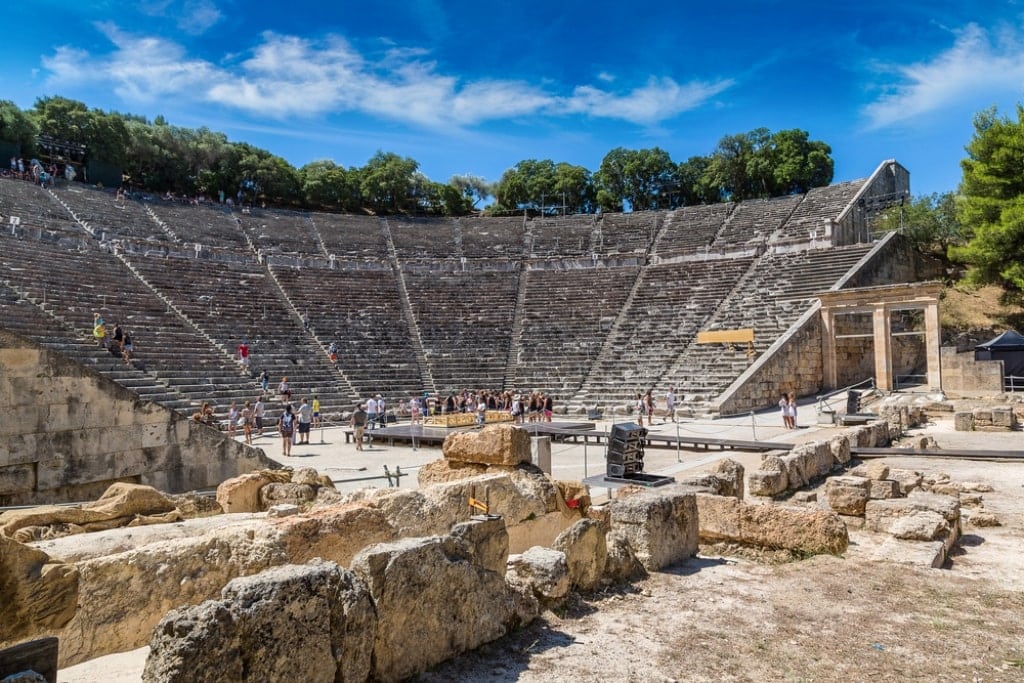
At the region of Argolis, you will also find Epidaurus, the site of the famed ancient theater of Epidaurus which is still active today with summertime programs of music, performances, plays, and ancient play productions in the framework of the Epidaurus summer festival.
The ancient theater is famous for its impeccable acoustics, which allows people in the upper tiers to easily hear something said on the center stage below.
In Epidaurus’ archaeological complex, very near the theater, you will also find the site of the Sanctuary of Asclepius, the ancient Greek god of medicine. Both are considered masterpieces of 4th-century ancient Greek architecture.
Recommended tour: Mycenae and Epidaurus: Full-Day Tour from Athens.
6. Dion
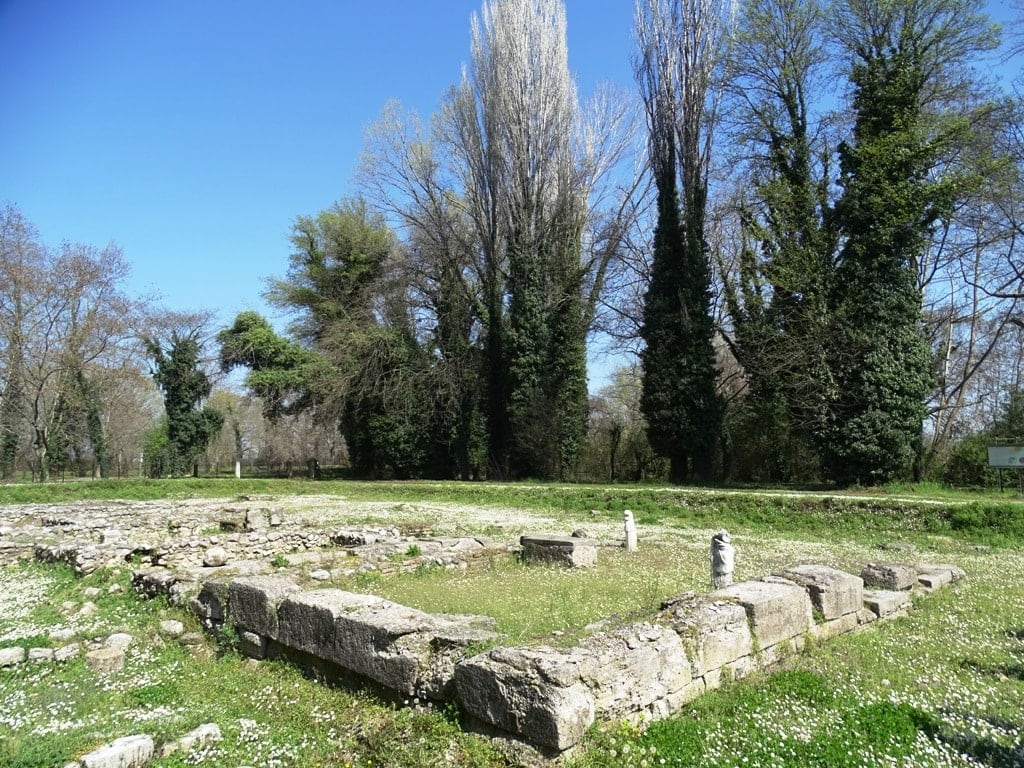
At Mt. Olympus, in the region of Pieria, you will find the Archaeological Park of Dion.
Dion is currently a village in Pieria, but it is also where Pausanias said Orpheus, of the legend of Orpheus and Eurydice, lived. During the Hellenistic period, Dion became the Macedonia region’s religious center.
Going to the Archaeological Park, you will see beautiful mosaic floors, various temples, structures such as sanctuaries and thermal baths, and a theater. There is also the Archaeotheke and the Archaeological Museum.
Recommended Tour: From Thessaloniki: Day Trip to Dion and Mount Olympus.
7. Vergina
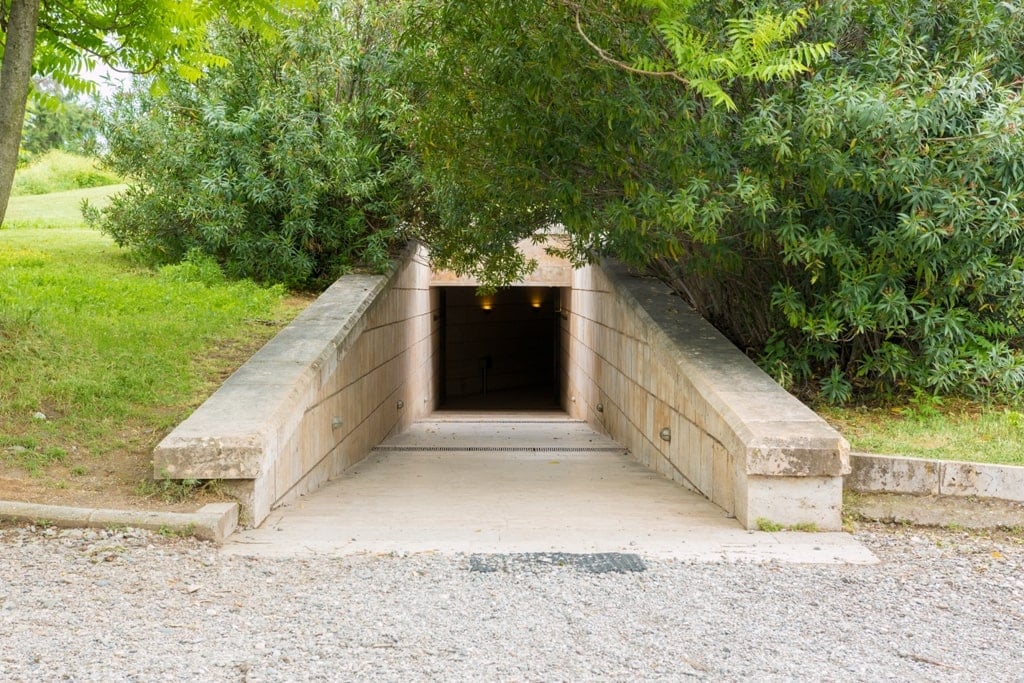
In northern Greece, near the city of Veroia, you will come upon the village of Vergina and the archaeological complex of the ancient city of Aigai, Vergina’s old name.
Aigai was the capital of the Greek kingdom of Macedonia and at the archaeological complex, you will be able to see the tomb of King Phillip II, the father of Alexander the Great, the tomb of the son of Alexander the Great, Alexander II, and the wife of Alexander the Great, Roxana.
You will also see the remains of the royal palace, and have a chance to marvel at the craftsmanship of famed artifacts discovered there, such as the golden grave crown of Phillip II and his golden larnax, gorgeous frescoes, and beautiful reliefs and sculptures.
Recommended tour: Vergina & Pella: Day Trip to the Greek Kingdom of Macedonia from Thessaloniki.
8. Pella
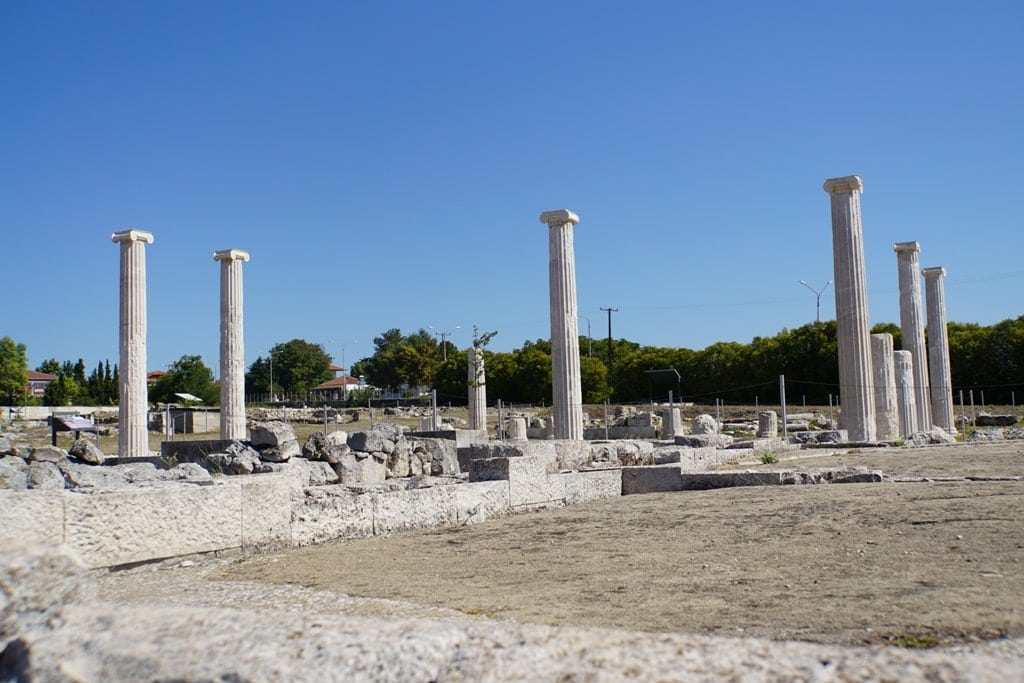
Pella was the capital of the Greek kingdom of Macedonia after Aigai. It is the birthplace of Alexander the Great.
Situated 39 km northwest of Thessaloniki, Pella’s archaeological site boasts beautiful remains of the residential area of the city. You will find well-preserved mosaic floors, shrines, temples, and cemeteries.
Don’t forget to visit Pella’s archaeological museum for a unique sculpted portrait of Alexander the Great among other important artifacts.
Recommended tour: Vergina & Pella: Day Trip to the Greek Kingdom of Macedonia from Thessaloniki.
9. Olympia
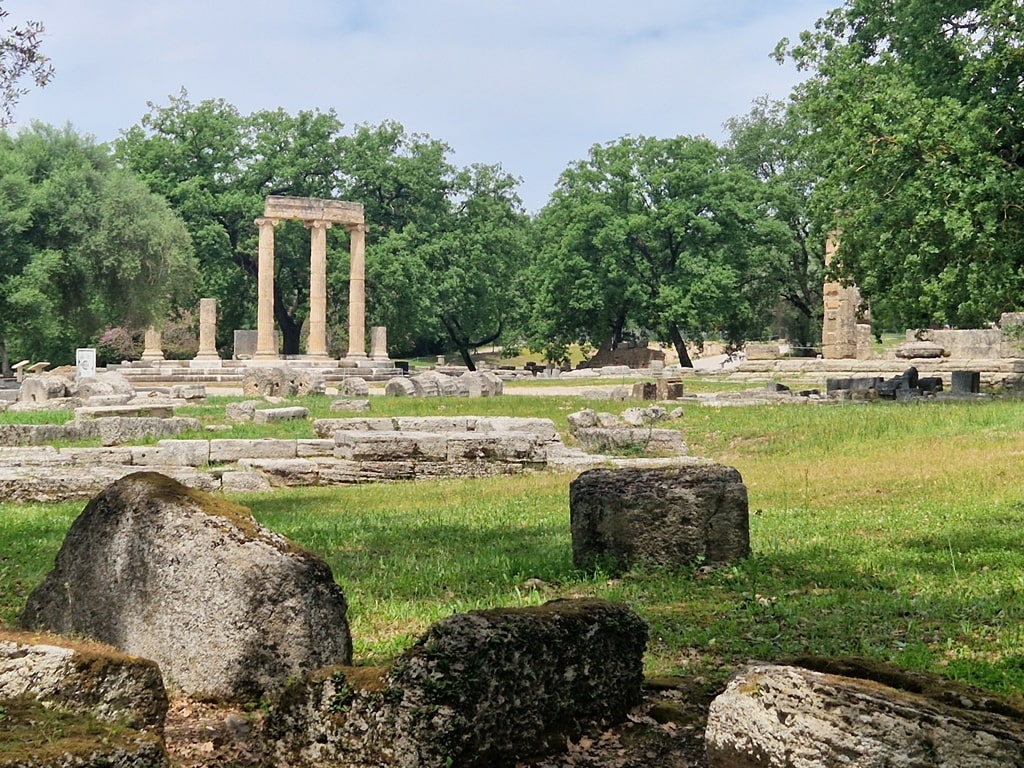
In the valley of the river Alpheios in western Peloponnese, you will find the site of Ancient Olympia, the birthplace of the Olympic Games and one of the most famous archaeological sites in the world.
Ancient Olympia was a sanctuary dedicated to Zeus, the king of the gods. It was one of the most significant religious and athletic centers of the ancient world. The Olympic Games originally were part of religious revel and worshipping ceremonies in honor of Zeus.
At the site, you will see where currently the ceremony for the Olympic Flame takes place as well as the remains of the temple to Zeus, famous statues such as Praxiteles’ Hermes, and beautiful sculptures.
Recommended tour: From Athens: Olympia and Corinth Canal Private Tour.
10. Messene
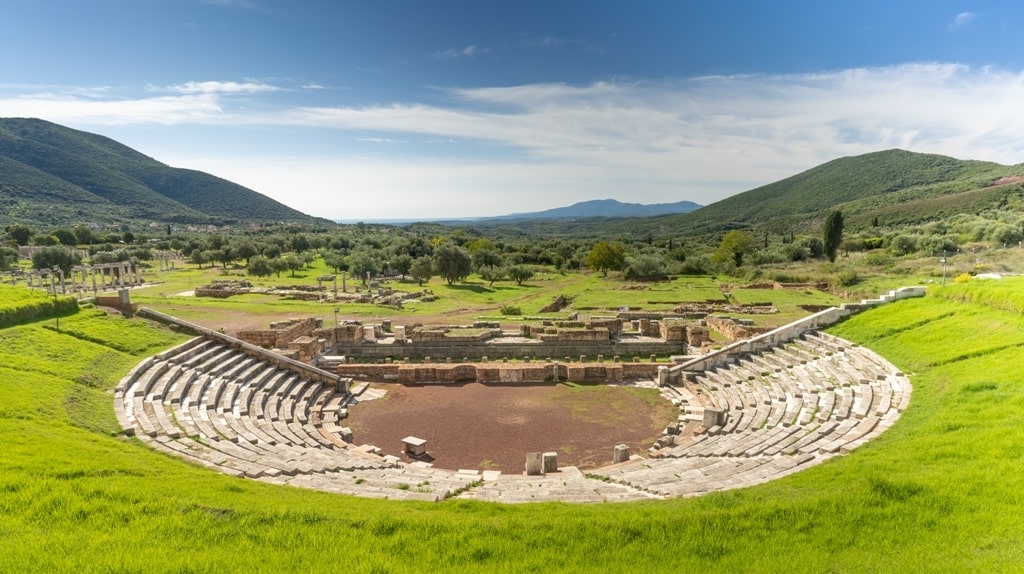
Ancient Messene is one of the best-preserved ruins of a Greek ancient city. You will find Ancient Messene in the Peloponnese, in the region of Ithomi.
Ancient Messene’s site is so vast that only a third of it has been excavated so far, and there is already a lot to see. There are several complexes to explore, from the Asclepieion with the temples to Asclepius and Hygeia, the god of medicine and the goddess of health, to the theater and the sanctuary of Zeus Ithomatas.
Messene was built in the Hippodamean style after the architect Hippodamus, who is considered the father of city planning.
11. Phillipi
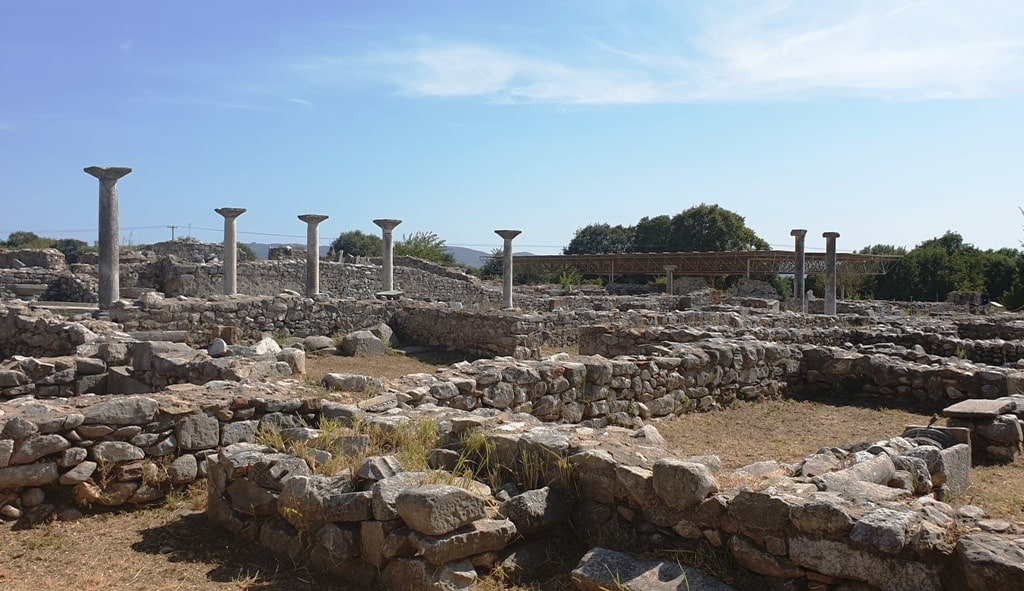
The ancient city of Phillipi, near the city of Kavala in the Macedonia region of Greece, is one of the most important archaeological sites of eastern Macedonia. Philip II of Macedon, Alexander the Great’s father conquered and fortified it and named it after himself. Phillipi is also significant in early Christian history, as it is the place where Apostle Paul established the first European Christian Church.
The archaeological site of the city complex includes the ancient agora, the acropolis, the prison of Apostle Paul, and several Byzantine churches. Make sure to visit the archaeological museum for several noteworthy exhibitions!
12. Delos
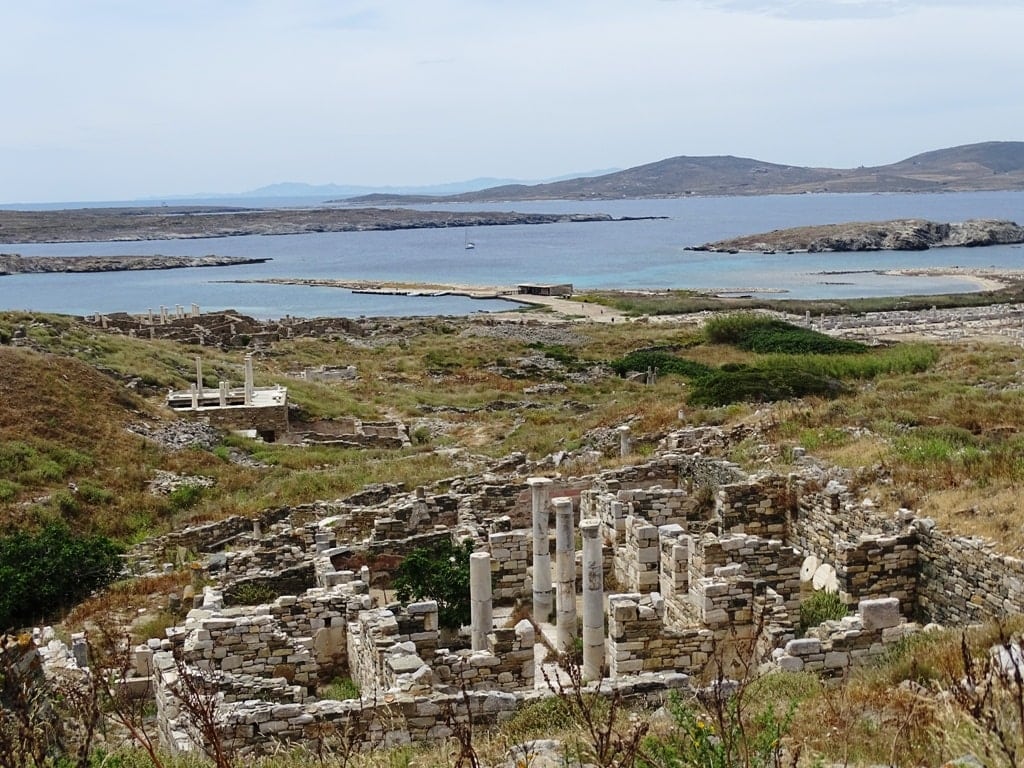
One of the many Cycladic islands in the Aegean Sea, Delos was one of the most important islands of ancient times. Currently, it is a literal open-air museum where there are no inhabitants and nobody is allowed to stay after dark. You get there on a day-trip boat from Mykonos or Tinos island.
Delos was where the ancient Greeks believed the gods Apollo and Artemis were born. It was, therefore, a designated sacred island, and currently, it boasts a vast complex of temples and supporting structures from the Archaic to the Hellenistic periods.
Recommended: The Original Evening Delos Guided Tour from Mykonos.
13. Knossos
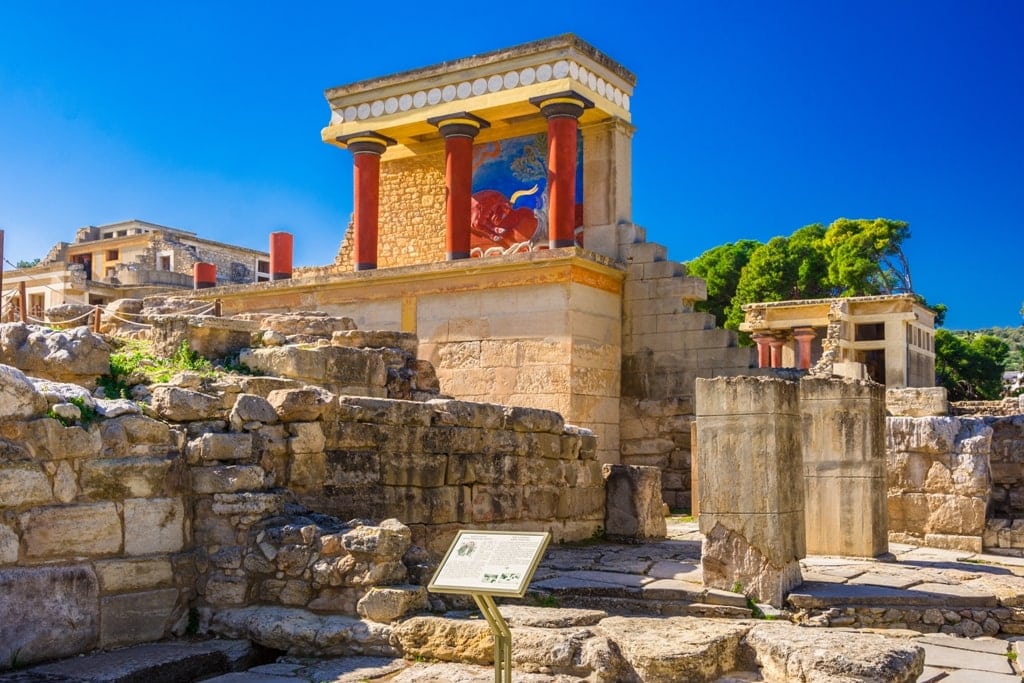
The ancient Minoan Palace of Knossos is one of the most famous and most important royal complexes on the island of Crete. You will find it south of Heraklion city.
Knossos palace was the hub of religious and political life in Minoan Crete. It is also a palace of legend, as it is where the legend of the Minotaur, Theseus, and Ariadne was said to have taken place.
The palace complex with the iconic crimson pillars, the throne room of Minos, the king of Crete, the gorgeous frescoes, and the many well-preserved rooms will surely mesmerize you.
Make sure to visit the Archaeological Museum of Heraklion for many of the artifacts discovered in the lush quarters!
Recommended tour: Knossos Palace Skip-the-Line Entry with Guided Walking Tour.
14. The Acropolis of Lindos in Rhodes
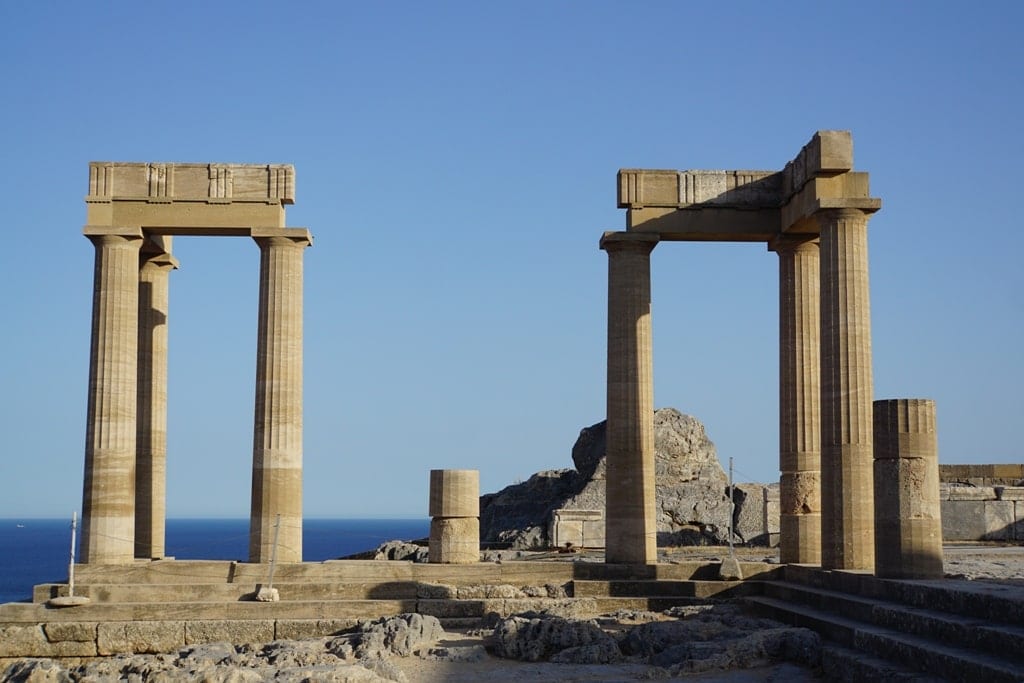
Ancient Lindos was one of the most important cities on Rhodes Island. It is currently situated beneath and around the modern Lindos village.
The Acropolis of Lindos, on the other hand, sits majestically at the edge of a cliff, surrounded by powerful fortifications. Within the Acropolis of Lindos, you will find impressive ruins of temples to Athena Lindia, several supporting structures such as the Propylaia, the Boukopeion where they performed sacrifices, a theater, a cemetery, a Hellenistic Stoa, and even Byzantine churches of great importance.
The Acropolis of Lindos is a time capsule that ranges from Archaic to Medieval times.
Recommended tour: From Rhodes City: Boat Day Trip to Lindos.
15. Santorini’s Akrotiri
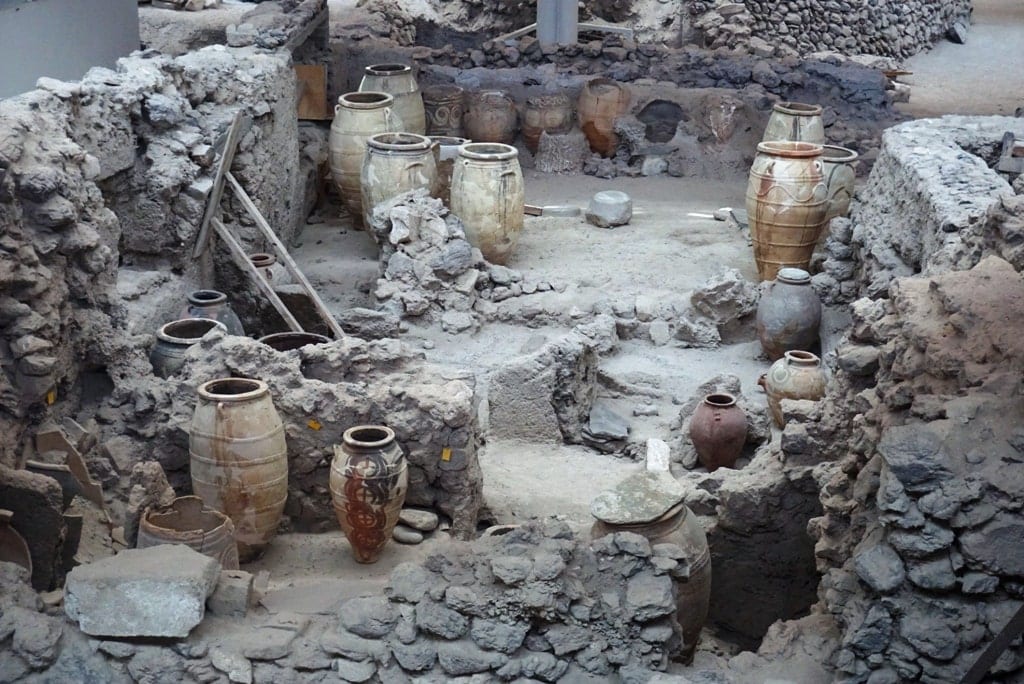
Santorini (Thera) is one of the most famous and popular islands in the Cyclades. But aside from the cosmopolitan resorts it also boasts a tremendously important archaeological site at Akrotiri, a Bronze Age settlement that was among the most culturally and economically important ones of the era.
At the archaeological site of Akrotiri, you will see amazingly preserved frescoes thanks to the ash that had been covering them since the 17th century BC. It’s this ash that has coined Akrotiri the nickname “the Greek Pompeii”.
You will have the opportunity to walk through two- and three-story buildings, see items of daily life preserved as they were when the ash covered them, including a charred bed, and several sections of the city, and learn more about life during that era. The excellent preservation of the entire complex will make you feel like you stepped back thousands of years in time!
Recommended tour: Archaeological Bus Tour To Akrotiri Excavations & Red Beach.
